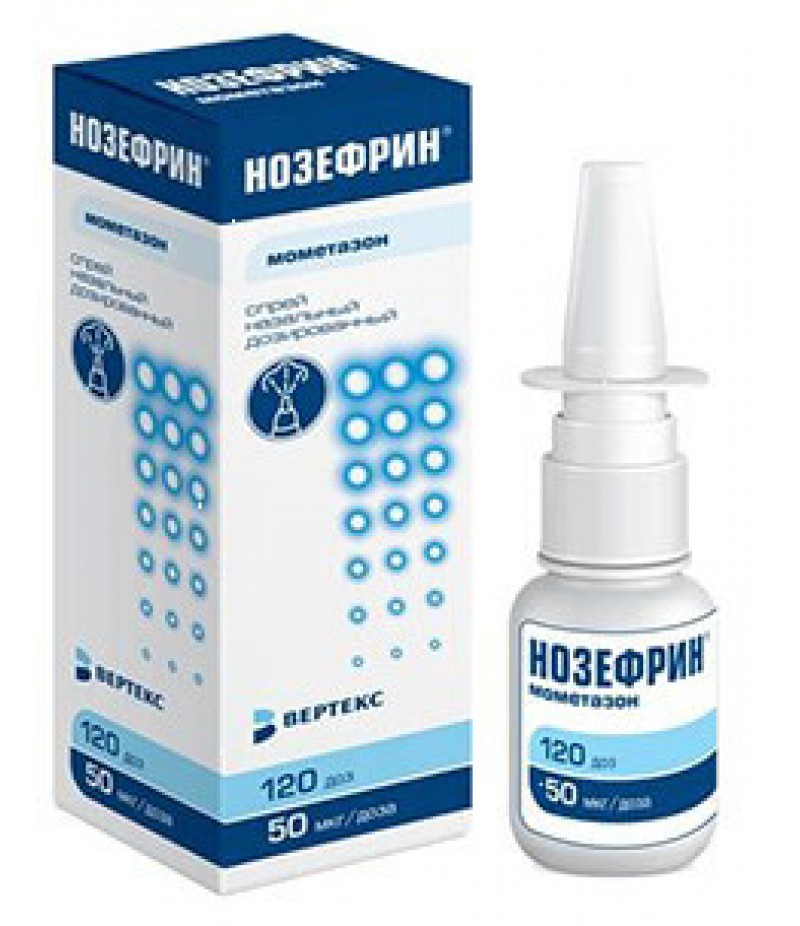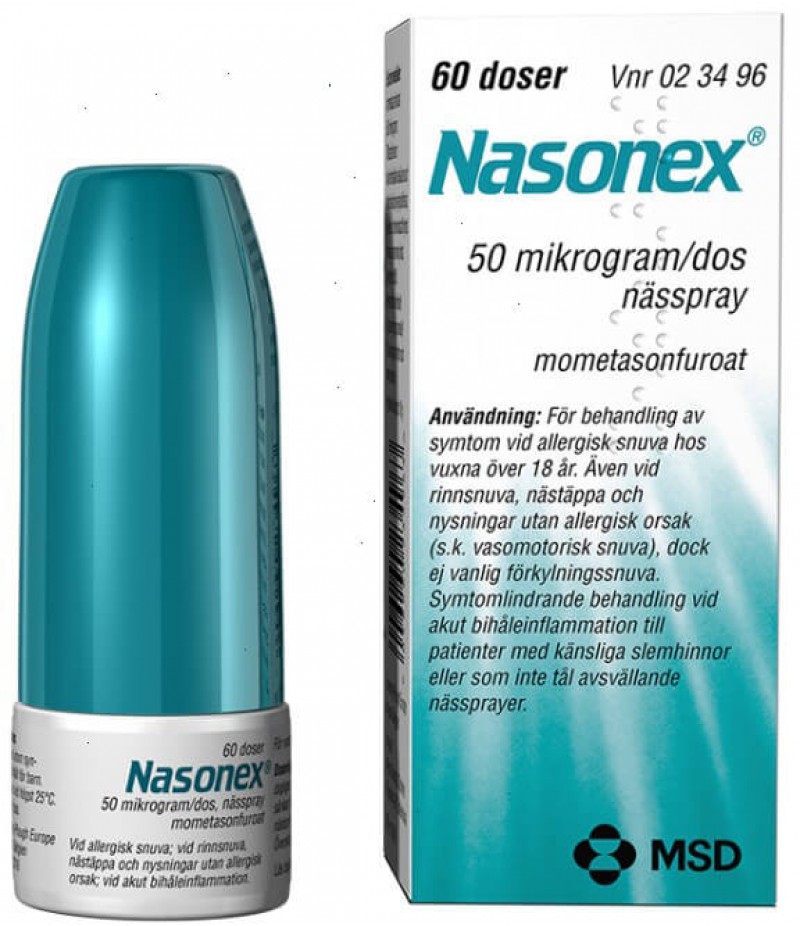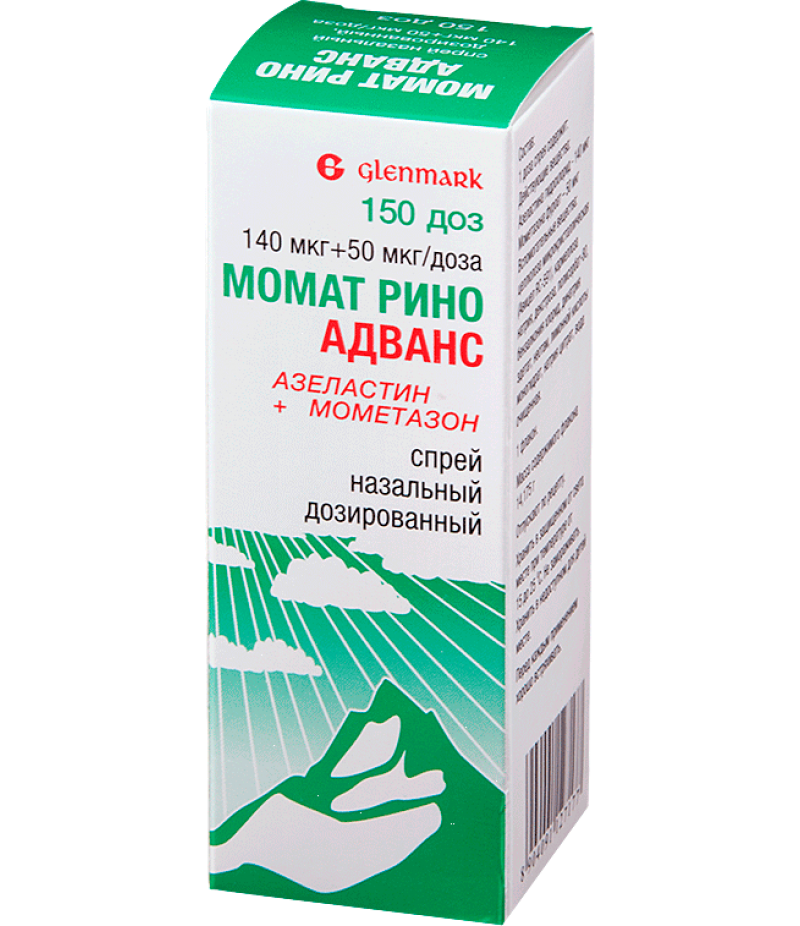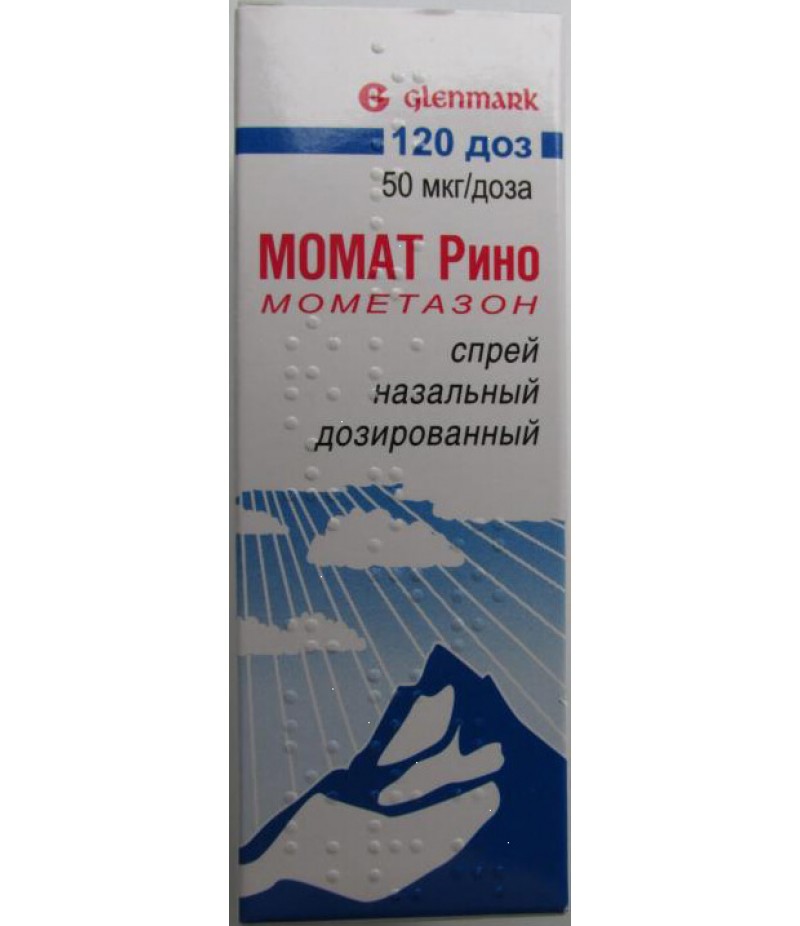Nozefrin spray 50mcg/dose 120doses 18gr
- $24.86
- 3 or more $24.50
- Availability:In Stock
Nozefrin user manualReed more and buy Nozefrin spray on this pageIndications for use:Inflammation and itching of the skin with dermatoses (including psoriasis, atopic dermatitis, seborrheic dermatitis), in which therapy is shown.A..
Tags: spray
Nozefrin user manual
Reed more and buy Nozefrin spray on this page
Indications for use:
Inflammation and itching of the skin with dermatoses (including psoriasis, atopic dermatitis, seborrheic dermatitis), in which therapy is shown.
Active substance, group:
Mometasone (Mometasone), Glucocorticosteroid for topical application
Dosage form:
nasal dosing spray
Contraindications:
- rosacea;
- perioral dermatitis;
- bacterial, viral (caused by Herpes simplex, Herpes zoster, including chickenpox) or fungal skin infection;
- tuberculosis;
- syphilis;
- postvaccinal reactions;
- Pregnancy (treatment of extensive skin areas, long-term treatment);
- lactation period (use in large doses and / or for a long time);
- Children under 2 years;
- hypersensitivity to any component of Nozefrin or to other GCS.
Caution should be applied to the face and intertriginous surface of the skin, apply with occlusive dressings, and apply to large areas of the skin and / or apply long-term (especially in children).
Dosing and Administration (Instruction):
Intranasally. Injection of the suspension contained in the vial is carried out by means of a special dispensing nozzle on the vial.
Tilt your head and inject the drug into each nasal passage as recommended by your doctor.
Before the first application of the nasal spray Nozefrin it is necessary to calibrate it by pressing the dosing nozzle 6-7 times, after which the stereotype supply of the preparation is established - 0.1 g of suspension (50 μg mometasone).
If the spray has not been used for 14 days or more, then a second 'calibration' is required.
Before each use, vigorously shake the bottle.
Treated seasonal shea all-the-year-round allergic rhinitis Adults (including the elderly) and adolescents with 12 years:
The recommended preventive and therapeutic dose of the drug is two injections (50 μg each) in each nasal passage once a day (daily dose of 200 μg). When the therapeutic effect for maintenance therapy is achieved, it is possible to reduce the dose to one injection in each nasal passage once a day (daily dose - 100 μg).
If the symptoms can not be reduced by applying the drug at the recommended therapeutic dose, the daily dose can be increased to four injections in each nasal passage once a day (daily dose of 400 μg).
After reducing the symptoms of the disease, a dose reduction is recommended.
Children 2-11 years old:
The recommended therapeutic dose is one injection (50 μg) in each nasal passage once a day (daily dose of 100 μg).
For the use of the drug in children, it may be necessary to help adults.
The onset of the drug is usually observed clinically within 12 hours after the first use of the drug.
Auxiliary treatment of acute sinusitis or exacerbation of chronic sinusitis The recommended therapeutic dose for adults (including the elderly) and adolescents from the age of 12 is two injections (50 micrograms) per nasal passage twice a day (400 μg daily dose).
If the symptoms can not be reduced by applying the drug at the recommended therapeutic dose, the daily dose can be increased to four injections in each nasal passage twice a day (a daily dose of 800 μg).
After reducing the symptoms of the disease, a dose reduction is recommended.
Treatment of acute rhinosinusitis without signs of severe bacterial infection The recommended therapeutic dose for adults and adolescents from the age of 12 is two injections (50 μg each) in each nasal passage twice a day (400 μg daily dose). If symptoms worsen during treatment, specialist consultation is necessary.
Treatment of polyposis of the nose
The recommended therapeutic dose for adults from 18 years (including the elderly) is two injections (50 μg each) in each nasal passage twice a day (daily dose of 400 μg).
After reducing the symptoms of the disease, it is recommended that the dose be reduced to two injections (50 μg each) in each nasal passage once a day (daily dose of 200 μg).
The duration of the course of treatment is 7-28 days and is determined by the effectiveness of therapy, as well as the patient's tolerability, the presence and severity of side effects.
Pharmachologic effect:
Nozefrin is a synthetic glucocorticosteroid (GCS). Has anti-inflammatory, antipruritic and antiexudative action.
Side effects:
Local reactions: burning, itching, paresthesia, folliculitis, acne, skin atrophy, hypertrichosis, hypopigmentation, perioral dermatitis, allergic contact dermatitis, maceration of the skin, attachment of secondary infection, striae, sweating. The probability of occurrence of the listed undesirable phenomena increases at application of occlusive dressings.
Systemic reactions: when external forms of SCS are used for a long time and / or for the treatment of large areas of the skin (the total area of application is larger than the palm of the patient), or with the use of occlusive dressings, especially in children and adolescents, systemic action, including adrenal insufficiency and Isenko-Cushing syndrome.
With an overdose of Nozefrin, oppression of the hypothalamic-pituitary-adrenal system may occur (including secondary adrenal insufficiency). Conduct symptomatic treatment, if necessary - correction of electrolyte imbalance, drug withdrawal (with long-term therapy, the abolition should be gradual).
Special instructions:
If there is no effect within 2 weeks of therapy, the diagnosis should be clarified.
When applied to large areas of the skin for a long time, especially with the application of occlusive dressings, it is possible to develop a systemic action of GCS. Given this, it is necessary to monitor the function of the hypothalamic-pituitary-adrenal system.
Avoid contact with the eyes.
Propylene glycol, which is a part of Nosefrin, may cause irritation at the site of application. In such cases, discontinue use of the drug and prescribe appropriate treatment.
It should be borne in mind that the GCS is able to change the manifestations of certain skin diseases, which can make it difficult to diagnose. In addition, the use of GCS may be the cause of delayed wound healing.
With prolonged therapy with SCS, sudden discontinuation of therapy can lead to the development of a rebound syndrome, manifested in the form of dermatitis with intense reddening of the skin and a burning sensation. Therefore, after a long course of treatment, the drug should be canceled gradually, for example, by switching to an intermittent treatment regimen before it is completely discontinued.
Due to the fact that the ratio of surface area and body weight is greater in children than in adults, children are at greater risk of suppressing the function of the hypothalamic-pituitary-adrenal system and the development of the Itenko-Cushing syndrome with any local GCS. Long-term treatment of children with SCS can lead to disruption of their growth and development. The use of the drug in children for more than 3 weeks has not been studied. Children should receive a minimum dose of the drug sufficient to achieve the effect.
There is no evidence of the influence of Nozefrin on the ability to drive vehicles and mechanisms.
Interaction:
Significant drug interaction in the treatment of Nozefrin in conjunction with other drugs has not been identified.




